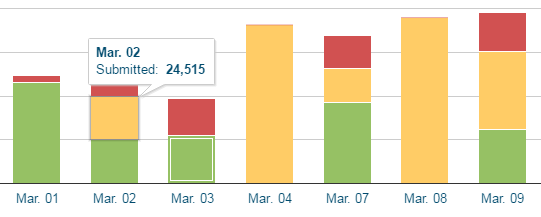
EMIR OTC derivative reporting Trade Repositories, who they are
Starting in 2014, the EU, under the watch of ESMA, put into effect trade reporting requirements for OTC derivative trades called EMIR reporting (EMIR overview here). As part of the process, rather than submitting reports directly to ESMA, the reporting framework put into effect trade repositories (TR) that act as central collection points for collection and managing the OTC derivative trade information. Part of a TRs function is also securing all the data, while making it available solely to regulators.
When deciding to begin reporting, firms have two choices; selecting one of the six TRs and reporting directly to them, or using a third party delegating firm that reports on their behalf to a TR. Often the decision is tied to other relationships a firm may have such as a large trading fund with a clearing house, non financial corporate firm using a treasury management solution that connects to a specific TR or smaller firm working with a third party platform such as that offered by Cappitech to save time and or money.
Who are the TRs approved for EMIR reporting?
Currently there are six TRs managed by the DTCC, UnaVista, CME, ICE, REGIS-TR and KDPW.
DTCC (Depository Trust & Clearing Corporation) – The DTCC is believed to be the largest EMIR reporting TR when ranked by the number of companies filing to them. The firm was created in the 1970s to help Wall Street with settling of trades with the advent of a central clearing location for traders to report. The DTCC has since grown to become a multi-asset and product provider of post trade reporting and clearing services. For OTC derivative reporting, the DTCC provides a ‘global’ solution, handling reporting to meet requirements for EMIR in the EU as well as similar frameworks existing in the US, Canada, Japan, Australia, Hong Kong and Singapore. The DTCC’s repository allows for reporting of all OTC derivatives asset classes including foreign exchange (FX) credit, interest rate, equities and commodities products.
UnaVista – Part of the London Stock Exchange Group (LSEG), UnaVista represents the exchange operator’s trade reporting and reconciliation services unit. As part of the LSEG, UnaVista can provide customers with straight through processing of EMIR reporting from central counterparties (CCP) that are connected to the LSEG through ther LCH.Clearnet and CC&G clearing units. The solution covers multi-asset reporting. In addition to EMIR, UnaVista provides services for MiFID reporting requirements.
REGIS-TR – Like other TRs, REGIS-TR is a multi-asset provider of reporting solutions for EMIR’s OTC derivatives requirements. In addition to EMIR, REGIS has recently announced their intentions to provide TR services of OTC derivative reporting in other jurisdictions such as Switzerland’s FinFraG. Like UnaVista, REGIS-TR is connected with exchange group clearing units, as REGIS is a joint venture of Deutsche Borse Group’s Clearstream and Iberclear which provides clearing services for Spanish stock exchanges.
CME European Trade Repository (CME ETR) – The CME ETR is part of the larger CME Group. Working in tandem with the CME’s clearing, exchange and execution solutions, the CME ETR provides customers the ability to connect trades and reporting requirements within the single company’s platforms. Like other TRs, EMIR reporting with the CME ETR covers a cross asset group of OTC and exchange traded derivatives. In addition to EMIR, the CME provides services to handle Australian derivative reporting requirements and may add MiFID II reporting when it goes into effect in January 2018.
ICE Trade Vault Europe – Part of the Intercontinental Exchange (ICE), the ICE Trade Vault Europe is the exchange operator’s EMIR reporting TR. Like other TRs affiliated with an exchange, the ICE Trade Vault connects to the ICE’s clearing units for automatic transmission of trades for reporting. However, unlike other TRs, the ICE is limited in its scope of derivative products available for EMIR reporting with the ICE Trade Vault TR focused on assets traded on the ICE’s platforms. In addition, the ICE provides favorable TR pricing to users of the company’s trade clearing services.
KDPW TR – Part of the KDPW CCP, the KDPW TR is a Polish TR that operates within the KDPW’s securities depository unit. The TR can handle EMIR reporting for cross asset derivatives including credit, FX, equities and interest rates. In addition to trade repository services, the KDPW also provides LEI (legal entity identifier) numbering. For EMIR, LEI’s are an important part of the process as each company that reports is required to have and report their LEI for identifying their trades.
Delegated reporting – As mentioned above, companies can also handle their EMIR reporting requirements by working with third party delegated reporting companies. These firms have direct relationships with any of the above six TRs and are authorized to report derivative trades on their client’s behalf with their LEI. For many firms that don’t have pre-existing relationships with clearing companies, aren’t financial companies or transact many orders, delegated reporting services such as Cappitech’s Capptivate solution may provide a lower cost and/or easier process for reporting.





